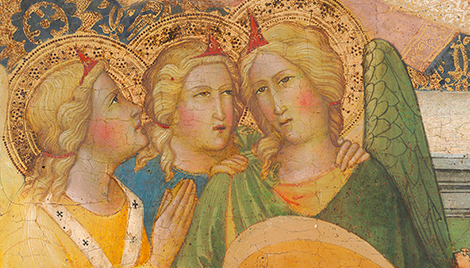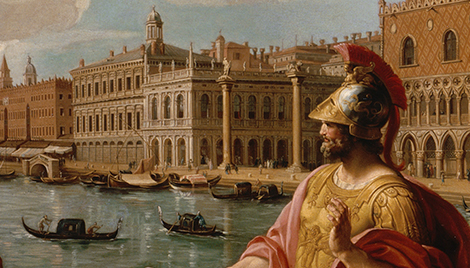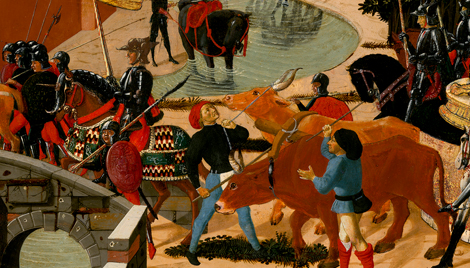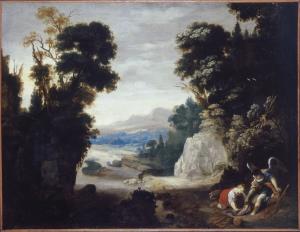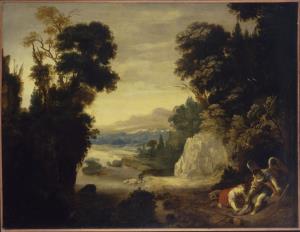Landscape with Tobias and the Angel
Landscape with Tobias and the Angel
- Artist
- Attributed to Agostino Tassi
- Artist Dates
- 1565-1644
- Artist Nationality
- Italian
- Title
- Landscape with Tobias and the Angel
- Date
- 1619-1630
- Medium
- oil on canvas
- Dimensions
- 100 x 131.1 cm (39-3/8 x 51-5/8 in)
- K Number
- K1541
- Repository
- Samek Art Museum
- Accession Number
- 1961.K.1541
- Notes
Provenance
(Matthiesen Gallery, London); sold to (Durlacher Brothers, New York) on 8 July 1946; [1] sold to the Samuel H. Kress Foundation on 19 May 1948 as Domenico Fetti; gift to to the Samek Art Museum Bucknell University in 1961, no. BL-K20. [1] Durlacher Bros Records 1919-1973, Getty Research Institute, Los Angeles, Record Number 950003, Series III, Box 18; Series II, Box 14.
Catalogue Entry
Attributed to Agostino Tassi
Landscape with Tobias and the Angel
K1541
Lewisburg, Pa., Bucknell University, Study Collection (BL-K20), since 1961.(1) Canvas. 39 3/8 x 51 5/8 in. (100 x 13.1 cm.). Good condition. The resemblance of the landscape in K1541 to that in pictures signed by Tassi suggests an attribution to him with a date in the 1620s.(2) Parallels in Tassi's paintings for the figures of Tobias and the Angel are not so easily found. This could be explained by the fact that Tassi sometimes collaborated with other artists. An example is Orazio Gentileschi's David in the Spada Gallery, Rome, for which Tassi is believed to have painted the landscape background.(3) The subject of K1541 is taken from the Book of Tobit (in the Apocrypha), chapter 6. Provenance: Durlacher's, New York. Kress acquisition, 1948.
References
(1) Catalogue by B. Gummo, 1961, p. 42, as Tassi. (2) K1541 has been attributed to Tassi by W. E. Suida (in ms. opinion). Cf. the signed paintings reproduced by E. Schaar in Mitteilungen des Kunsthistorischen Institutes in Florenz, vol. IX, 1960, pp. 137 f. For details of foliage and for the distant view, K1541 should be compared with the Picnic on the Grass, in the Uffizi, usually accepted as painted by Tassi in the late 1620s. (3) See F. Zeri (La Galleria Spada in Roma, 1954, p. 87) and A. Moir (The Italian Followers of Caravaggio, vol. II, 1967, fig. 66).

